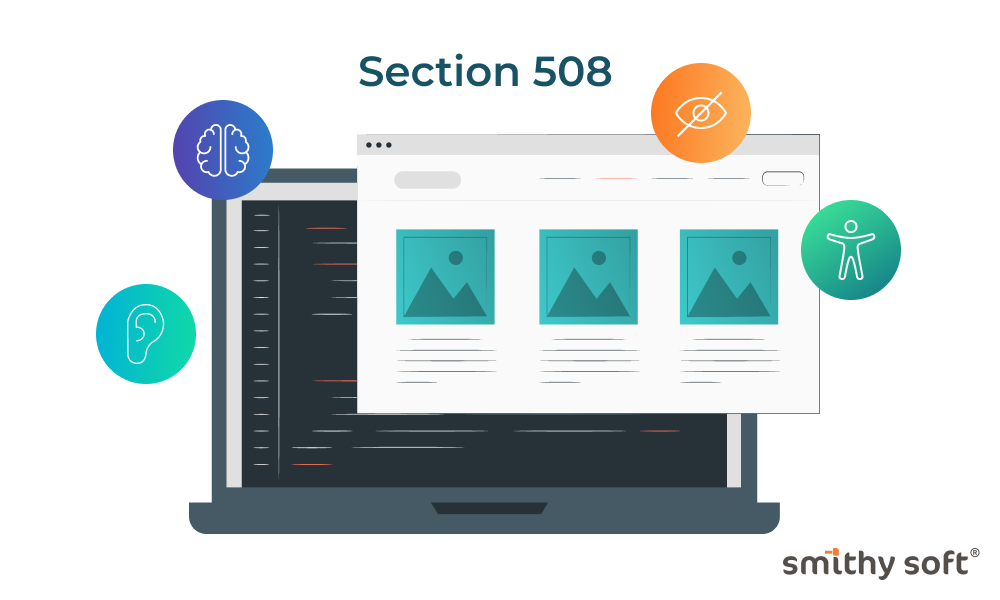10 Effective Ideation Techniques for All Teams

An idea is an essential component of any successful business. Firstly, it is the idea that starts a business, and secondly, without new ideas that are relevant and needed by consumers, your business will not stay afloat for long. Ideas keep a business alive and ensure its advancement, especially in today's fast-paced competition.
"Ideation" literally stands for "idea generation," which is the process of spawning various ideas. But it's often not about the quantity of ideas but their quality. That is why ideation is about selecting and refining new ideas to solve a problem or use a new opportunity and not only about generating them. This process requires communication, creativity, courage, a non-standard approach, some risk-taking, and imagination, but at the same time criticality, analytical skills, systematization, and generalization.
What is the goal of Ideation?
No, it's not about creating a plethora of the most incredible ideas. The main point is to develop a Big Idea for your business.
A big idea is the one that will stand the test of time. It is a platform on which you can create multiple campaigns. It's an idea that spawns even more ideas and grows stronger over time. It's an idea that lives. And its life is in its use: the value of an idea is in its use.
And to find this treasure, to come up with a Big Idea, you need an ideation process.
Some tips for effective Ideation
Before we look at the techniques for generating ideas, it's important to highlight a few general tips to make the ideation process engaging and, most importantly, productive.
- Expand the list of participants as much as possible.
Ideas and their generation can come from anyone involved in the business or organization tangentially or directly, including lower-level employees, managers, customers, partners, and stakeholders.
- There are no non-creative people.
Everyone is capable of coming up with an idea. Everyone is creative. It's just that not everyone has the means and conditions to demonstrate it, and not everyone wants to listen.
- No hierarchy.
Leave your title, position, and public experience somewhere outside the ideation process and participate on an equal footing with everyone else.
- There are no bad ideas.
Participants in an ideation session should leave all critical judgment out of the room. It means creating an environment free of negativity, objections, criticism, and "yes, but..." responses. Think of each idea as a piece of a puzzle: no matter how insignificant it may seem at first, it may later become part of a bigger picture. By the way, many great business concepts come from a combination of impossible ideas that become feasible if you put them together.
- An atmosphere of positivity.
The key to a good ideation session is to make everyone in the room feel comfortable. Friendliness opens people up, while wariness, on the contrary, prompts them to withdraw. Negativity and the organizer's bad mood make the process unpleasant and unproductive.
- Record everything.
Take notes, use markers and a whiteboard, sticky notes, etc. Because during active ideation brilliant ideas can get lost ("It's such a good idea, we'll surely remember it tomorrow." Most often, you won't...). So make sure to record every idea, as it can later be used as a "building block" in subsequent sessions.
"The best ideas start as conversations" (Jonathan Ive)
It's a short but meaningful phrase that emphasizes the importance of communication and sharing ideas to generate creative ideas. Jony Ive was a legendary chief designer and senior vice president of design at Apple from 1992 to 2019. He played a pivotal role in creating the company's iconic products such as the iMac, iPod, iPhone, and iPad. This quote reflects Ive's philosophy that innovation and creativity often come from open conversations, sharing perspectives, and working together as a team. It emphasizes the importance of creating an environment that encourages communication and discussion to develop new ideas.
Effective Ideation techniques
Various tools and techniques can be used in a group of people to stimulate idea generation.
The traditional one is the brainstorming technique, where participants are encouraged to share any ideas that come to their mind. It is believed that by generating a large number of ideas, the brainstorming group is more likely to find a suitable solution to whatever problem they are facing. This traditional technique has its continuation in the development of several brainstorming apps, for example, Sideways 6, Yambla, Canny, Brightidea, Ideawake, etc.
Here are ten other practical techniques.
1. Brainwriting
Similar to brainstorming, brainwriting focuses on the accumulation of different points of view. But instead of shouting out ideas, team members write them down on paper without any discussion with others. Participants then pass their ideas around to others in a circle so that colleagues ponder them by adding new perspectives, variations, or improvements. The cycle continues until everyone has their original sheet back with team reactions and input.
Another variation of this technique is the 6-3-5 method. It requires six participants who must try and generate three ideas within five minutes. This action is repeated for six rounds, or 30 minutes total, and will result in 108 ideas.
This technique diversifies ideas and encourages inclusivity, which is useful for large groups where some team members may be more comfortable sharing ideas in writing than verbally.
2. "Yes, And…"
This is an improvisation technique that immediately stops convergent thinking (logical thinking that assumes a single correct solution). Working in pairs or small groups, one person starts by voicing an idea or thought. The next person responds: "Yes, and..." to develop the idea, adding to it, explaining it, and so on.
This technique can often lead to funny results, but it can also lead to an unexpected discovery that was not initially considered. This technique brings participants together and is also a handy tool to show that all ideas, no matter how crazy they may seem, are welcome.
3. SCAMPER
SCAMPER is an abbreviation for Substitute, Combine, Adapt, Modify, Put to another use, Eliminate, and Rearrange. It is a technique for rethinking existing ideas, services, and products. It is mainly used by teams that are thinking about ways to resuscitate an old product to meet modern consumer trends. Using the SCAMPER method, they explore several options for rethinking.
Substitute. What can you replace (f.e. material used, people involved, process steps, etc.) in your product/service to improve it?
Combine. What ideas, resources, and steps can you combine to get a more effective result?
Adapt. What process, component, or function should be customized to get a better result?
Modify. What elements can you alter (add more or less) to achieve the desired result?
Put to another use. What other purposes can the product/service be used for? Who else can use it?
Eliminate. What element in your product or service can you remove or reduce?
Reverse or rearrange. Discuss how changing the order or arrangement of factors or units in a given situation may lead to differing results.
4. Mind mapping
Mind mapping is a visual technique for organizing and presenting information, ideas, or concepts in a hierarchical and interconnected way. It involves creating a diagram that starts with a central idea or theme and branches out into sub-themes, associations, and related details. Mind maps use lines, colors, keywords, and visual elements to illustrate the connections between different components of the mapped information.
Mind maps are particularly helpful for visualizing and simplifying complex concepts, promoting creative thinking, and improving memorization because of their visual and associative nature. It is also an excellent method for teams that want to identify and remove redundant features in an application quickly.
5. Six Thinking Hats
This creative problem-solving and decision-making technique was developed by Edward de Bono. It allows one to look at complex problems from different perspectives. Each "thinking hat" represents a different way of thinking, helping participants systematically explore various angles of a problem or solution.
Here are the six thinking hats and their respective roles:
The White hat symbolizes impartial and fact-based thinking. With the White Hat, participants must concentrate on gathering facts, information, and data.
The Red hat denotes emotional and instinctive thinking. Participants share their feelings, emotions, and intuitions freely without needing to justify them.
The Black hat represents analytical and cautious thinking. Those with the Black Hat focus on spotting potential issues, risks, and negative aspects.
The Yellow hat emphasizes optimistic and constructive thinking. Participants seek benefits, advantages, and opportunities related to an idea or decision.
The Green hat stands for imaginative and inventive thinking. The Green Hat is worn to create new ideas, solutions, and alternatives.
As for the Blue hat – it acts as the organizational or process hat. The person in the Blue Hat facilitates or manages the thinking process.
6. Five Whys
The Five Whys is a sound way to get to the heart of the problem. It is a simple but effective tool that can be used to identify the root cause of a problem by asking the question "Why?" in five different contexts.
Using a screen or flipchart, show the problem you want to solve. Ask the group why the problem exists and use the results of the discussion to formulate a new problem statement. Do this four more times and then start working on how to solve this new problem statement.
For example, start by formulating the problem statement: "Our website didn't go live on time." Then ask why the problem occurred. Once you hear the answer, ask the same question several times more until you stop collecting valuable information.
7. Crazy 8's
This is a rapid brainstorming technique often used in design thinking and innovation workshops. In this creative process, participants have 8 minutes to independently create eight separate solutions or sketches related to a given problem or task. For this purpose, they are given sheets divided into eight zones. The emphasis is on speed and quantity rather than perfection or feasibility, encouraging participants to push their creative boundaries and explore unconventional ideas.
After the time is up, participants share their creative ideas with the group, leading to discussion and potential combinations of concepts. This method effectively breaks down mental barriers and fosters a culture of open innovation by encouraging diverse and rapid idea generation.
By setting a short time limit and encouraging participants to generate a large number of ideas within that period, Crazy 8's technique helps to overcome overthinking and promotes rapid, spontaneous idea generation.
8. Worst Іdea
This technique was suggested by Bryan Mattimore, innovation consultant. It can help save the day when nothing seems to be working and can reignite the energy levels of groups that are approaching creative burnout.
The technique is quite simple: ask the group to make a list of bad, terrible, stupid, illegal, or gross ideas. This process will make participants laugh and re-engage them in the process. Once you have created a list, invite the group to turn these terrible ideas into good ones, either by considering the opposite or by finding some aspect of a terrible idea that can be used to inspire a good one.
This technique works surprisingly well because it tends to relax the brainstormers. After all, they can often feel pressured to come up with a great idea, and it may limit their ability to be creative. By temporarily focusing on absolutely bad ideas, they get a chance to relax and have fun. Laughter is also a stepping stone that helps people make surprising or unexpected connections – the basis of most humor. In addition, Mattimore notes, it's the nature of our brains to think about one idea while simultaneously considering its opposite. So look for the "seeds" of good ideas among bad ones.
9. Lotus blossom
In this creative technique, one central theme forms the basis for ideas. From this central theme, eight further conceptual themes will blossom, each of which will then become a separate central theme for developing eight more.
There are four steps in this process:
- Draw a square in the center of your paper and write the central theme inside it.
- Come up with eight related ideas and place each in a new square surrounding the central square.
- For each of the eight initial ideas, develop eight more related themes, placing each in a new square.
- Expand as much as you find relevant.
This technique is a good start for generating ideas. Eight related ideas branch out from the main theme, with each one serving as a central theme to generate eight additional ideas.
10. AI-Powered Idea Generation
The advance of Artificial Intelligence (AI) is reshaping the landscape of idea generation. It presents countless opportunities to enhance creativity and better problem-solving. According to a BCG study (2023), 44% of companies reported using AI in the ideation process, such as validating and highlighting ideas. And this percentage will continue to grow as it is convenient and fast.
AI-powered ideation means integrating artificial intelligence into the creative process. These intelligent systems can analyze massive amounts of data, extract patterns, and provide unique insights, making them invaluable resources for idea generation.
Artificial intelligence is changing the rules of ideation by helping with brainstorming, trend forecasting, and sentiment analysis. Thanks to AI-driven brainstorming platforms, you can collaborate with AI to explore new possibilities for your ideas and predict their likely outcomes.
There are several useful AI brainstorming tools available today, including Wondershare EdrawMind, HyperWrite, Whimsical, Context Minds, and Ayoa.
BOTTOM LINE
Ideation is a remarkably beneficial process. First of all, it helps one find unexpected solutions and sheds light on evident things that might have been overlooked or missed.
Ideation encourages people to think further, develop, be relevant and engaging, and, most importantly, innovative. With the right tools, techniques, and team, finding the right solutions is much easier and, at times, more fun. Ideation can be a useful part of your team building.
At the same time, ideation that was carried out with particular techniques described above allows us to get a clearer picture of what went wrong with the initial program concept and what NOT to do next time.
The SmithySoft team will be happy to advise you and provide all the necessary support, in particular at the Ideation & Discovery stage: https://www.smithysoft.com/ideation-discovery


